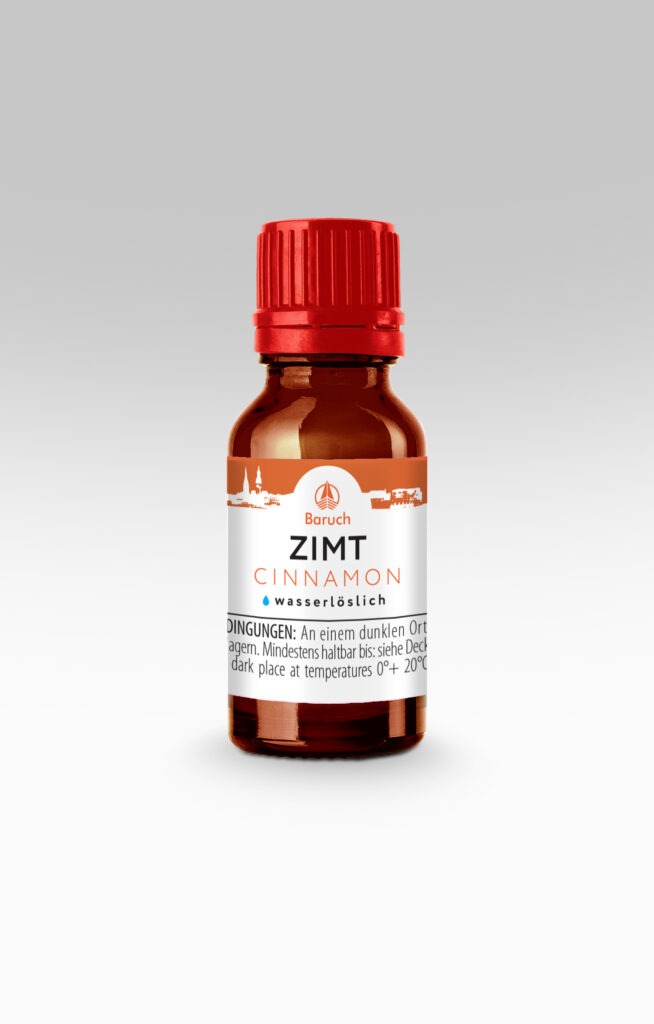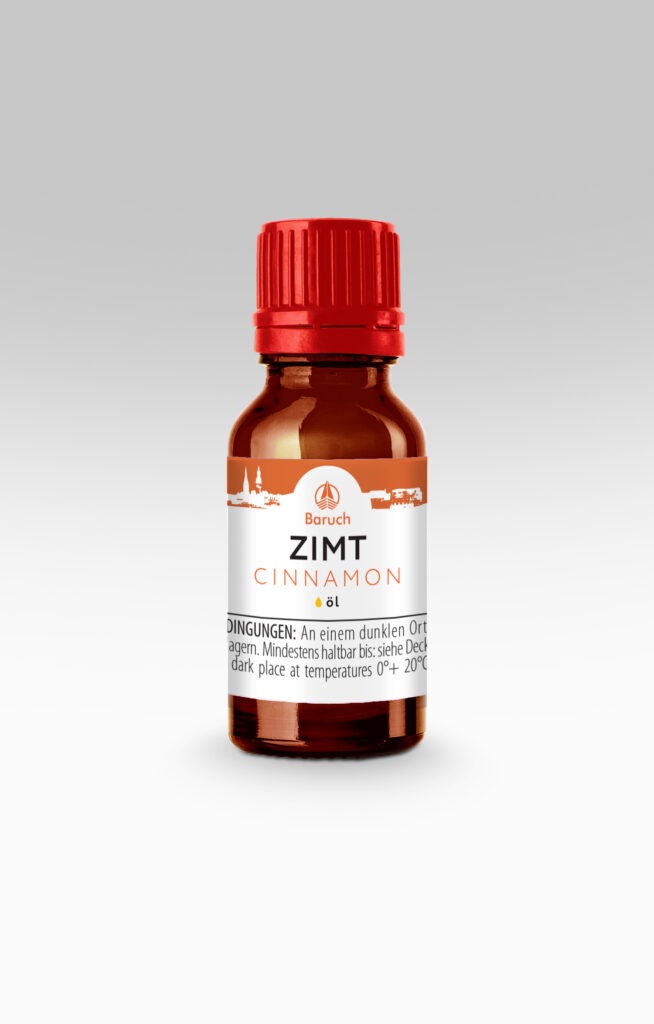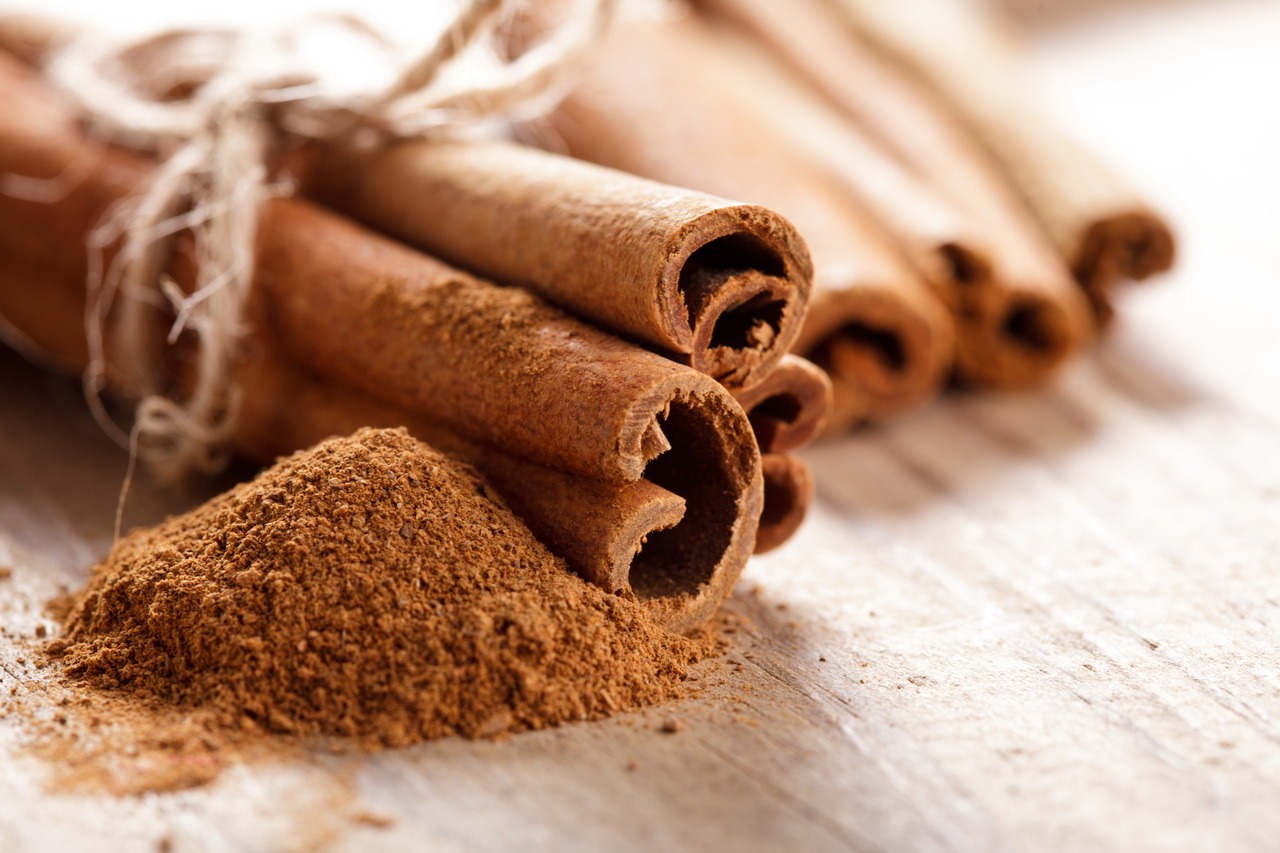The bark of the cinnamon tree from the laurel family is used as a spice. Real cinnamon should not be confused with the bark of the cassia tree, which is often marketed as “Indonesian cinnamon”. Cassia extract is coarser in taste and aroma and contains less valuable cinnamaldehyde.
Cinnamon has long been used as a spice and recommended as a remedy for colds. There is some evidence that cinnamon can be used to treat type 2 diabetes.
Cinnamon only grows wild in Sri Lanka and southern India. Cinnamon has been cultivated as a crop since the 17th century. Cinnamon seedlings were later brought to the countries of Southeast Asia, but the quality of the raw materials obtained there deteriorated.
Cinnamon is widely used in the food industry. In the confectionery industry, mainly as a natural flavoring and for the production of confectionery with a slightly spicy taste. Cinnamon is widely used in liquor formulations. Quite often, cinnamon is used to make compotes, syrups, and cucumbers for canning. This is because cinnamon has very powerful antimicrobial and antifungal properties while being a very powerful antioxidant.
Cinnamon is widely used in perfumery to make oriental perfumes.
CO2 extract from cinnamon “Biozevtika” is a yellowish-oily liquid with a pleasant, distinctive, characteristic odor. In the course of gas chromatographic-mass spectrometric investigations, more than 300 compounds were analyzed in terms of their composition, of which more than 50 were identified.


Chart 1. The main components of the CO2 extract of cinnamon
| NAME | CONTENT IN% OF THE AMOUNT OF VOLATILE COMPONENTS | EFFECT |
|---|---|---|
| Cinnamal | 80 | Part of perfume compositions, food essences, soap fragrances, for the extraction of cinnamon alcohol, cinnamic acid and some other flavorings. Fungicide and insecticid |
| Eugenol | 8 | Anti-inflammatory, analgesic, drying skin. Warms, eliminates infections in the upper respiratory tract |
| Cinnamaldehyde | 4 | Shows UV filter properties |
| Beta-caryophyllene | 2 | Is used in perfume compositions, in fragrances for soaps and cosmetics |
| Linalool | 1,5 | Antimicrobial. Component in perfumery |
| Palmitic acid | 1,2 | Mainly used as a natural flavoring agent. Antiseptic |
| Palmitic acid | 12 | Unsaturated fatty acid for water repellency in cosmetics |
| Phillandren | 1,1 | perfumery fragrance |
| α- and β-linolenic acid | 0,9 | Unsaturated, essential fatty acids from the class of omega-3 fatty acids. It has a membrane protecting, angioprotective effect. Immunomodulatory, improves brain metabolism |
| Methylhavecol | 1 | Used as a component in perfume compositions. Gives the products a healing aromatherapy effect for headaches, insomnia, fatigue. Enhances the intoxicating effect of vodkas. In large doses, it is a hallucinogen |
In cosmetics, cinnamon CO2 extract is used in the following formulations:
- Face masks with antioxidant effects and improving the color and texture of the skin
- Masks that prevent hair breakage, improve its appearance and promote accelerated hair growth. It should be noted that the CO2 extract of cinnamon has a lightening effect.
Chart 2. Application rates, recommendations for the use and storage of CO2 extract from cinnamon
| Food usage rates | Item А100: 0.003% (30g per ton) Water-soluble microemulsions EMA1: 0.3% (3l per 1000l or 3ml per liter) |
| Application rates in cosmetics | Item А10: 1-3% Item А100: 0.1-0.3% |
| Recommendations for use | It is recommended to add CO2 extracts in the final stages of preparation, in the cooling phase of the end product. |
| Storage Instructions | Storage advice |
